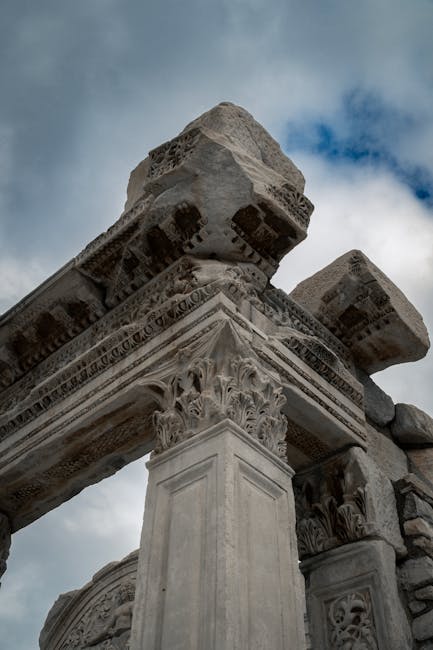-
Archaeological Discovery: A significant archaeological find has occurred in Lefkada: the first ancient Greek theater discovered in the Ionian Islands. This is noteworthy as it provides new insight into the history and culture of the region.
-
Location and Composition: The Ionian Islands are situated off the western coast of Greece in the Ionian Sea. The island group comprises seven major islands (Corfu, Paxi, Lefkada, Ithaki, Kefalonia, Zakynthos, and Kythira) and several smaller ones. They are also known as the “Heptanese” or “Seven Islands”.
-
Size and Geography: Kefalonia is the largest island. Mount Ainos is the highest point, reaching 1,628 m.
-
Historical Context: The islands have a rich history, having been controlled by Venice, Russian and Turkish forces, Britain, before ultimately being ceded to Greece in 1864. This complex history has shaped the islands’ cultural identity.
05.04.25
BIMSTEC Summit Highlights
For Prelims:
- BIMSTEC: Bay of Bengal Initiative for Multi-Sectoral Technical and Economic Cooperation, a regional organization.
- Region: Focuses on the Bay of Bengal region, connecting South Asia and Southeast Asia. Relevant to understanding India’s role in the Indo-Pacific and Indian Ocean.
- SAARC Alternative: BIMSTEC is viewed as a viable alternative to the South Asian Association for Regional Cooperation (SAARC).
Why in News:
* The 6th BIMSTEC Summit was hosted by Thailand.
* The summit focused on strengthening regional cooperation and addressing key challenges.
For Mains:
-
Key Highlights of the 6th BIMSTEC Summit:
- Bangkok Vision 2030: A roadmap for regional prosperity, economic integration, and resilience.
- BIMSTEC Centres of Excellence: India to establish centers for Disaster Management, Sustainable Maritime Transport, Traditional Medicine, and Agriculture.
- BODHI Program: Skill development and capacity building program for BIMSTEC nations.
- Cancer Care Capacity Building: Proposed program for cancer care.
- BIMSTEC Chamber of Commerce and Business Summit: To promote regional economic integration.
- People-to-People Linkages: Initiatives like BIMSTEC Athletics Meet (2025), First BIMSTEC Games (2027), and cultural exchange programs to strengthen ties.
-
Significance of BIMSTEC for Regional Cooperation:
- Act East Policy Alignment: Enhances India’s trade and security prominence.
- Alternative to SAARC: Provides a platform for regional cooperation in South Asia.
- Platform for Regional Cooperation: Facilitates cooperation among South and Southeast Asian countries, especially in security and HADR.
- Counterbalancing China: Serves as a platform to balance China’s growing influence in the region.
- Cultural Preservation: Promotes and preserves the region’s intangible cultural heritage.
Audible Enclaves and PAL Technology
-
Audible Enclaves (AE) and Parametric Array Loudspeakers (PAL) Focus Sound: These technologies combat sound dispersion in noisy environments by creating focused sound beams. This ensures only the intended listener hears the audio.
-
Audible Enclaves (AE): AE creates pockets of sound using two inaudible high-frequency waves. These waves interact non-linearly at a specific location to produce audible sound, offering privacy and personalized audio experiences.
-
Parametric Array Loudspeakers (PAL): PAL uses modulated high-frequency ultrasonic waves to generate directional sound beams. These waves self-demodulate in the air, producing focused sound and minimizing unwanted dispersion.
-
How PAL Works: PAL emits high-frequency waves modulated with an audio signal. As these waves travel, they self-demodulate, creating a narrow sound beam audible only to those in its path.
-
AE’s Unique Approach: AE uses two inaudible high-frequency waves that, when they intersect, create audible sound only at that specific location.
-
Applications: PAL and AE are useful in museums, retail, public spaces, entertainment, assistive technology, and security. They provide targeted audio without disturbing others.
-
Published Research: A study published in Proceedings of the National Academy of Sciences highlights researchers’ success in creating audible enclaves using two high-frequency waves.
Kannadipaya, unique bamboo mat of Idukki
- GI Tag Awarded: Kannadippaya, a traditional tribal handicraft from Kerala, has received the Geographical Indication (GI) tag.
- Protection and Global Platform: The GI tag ensures market protection and provides a global platform for this unique product.
- First of its Kind: Kannadippaya is the first tribal handicraft product from Kerala to receive the GI tag.
- Craftsmen and Organizations recognized: GI tag has been awarded to the Unarvu Pattikavargha Vividodesha Sahakarana Sangam and the Vanasree Bamboo Craft & Vanavibhava Shekarana unit.
- Reflective Properties: The name “Kannadippaya” (mirror mat) comes from its unique reflective surface.
- Material: Made from the soft inner layers of reed bamboo (Teinostachyum wightii).
- Temperature Regulation: It stands out for its unique properties – providing warmth during winter and cooling effect in summer.
- Tribal Communities Involved: Primarily preserved by the Urali, Mannan, Muthuvan, Malayan, Kadar, Ulladan, Malayarayan, and Hill Pulaya communities across multiple districts.
- Bamboo Collection Ritual: The bamboo collection is a full-moon ritual, with each expedition to the forest and back extending to a day and night.
- Historical Significance: Historically, kannadippaya was presented to kings as a mark of honor.
- KFRI’s Role: The Kerala Forest Research Institute (KFRI) played a crucial role in securing the GI tag.
- Empowering Artisans: The GI tag empowers tribal artisans, opening doors for them to become entrepreneurs.
- Market Challenges: Lack of a structured market is a major challenge for tribal communities.
- Need for Promotion: State and Central governments are urged to promote kannadippaya and expand its reach.
- Reviving Interest: Emphasizing the importance of reviving interest in the craft among younger generations.
- International Markets: The GI tag will attract more artisans and open international markets due to the demand for eco-friendly products.
- KFRI’s Achievement: Securing the GI tag during KFRI’s golden jubilee year is a remarkable achievement.
Vibrant Villages 2.0
-
Vibrant Villages Programme-II (VVP-II) Approved: The Union Cabinet approved VVP-II for FY 2024-25 to 2028-29 with a total outlay of ₹6,839 crore.
-
Central Sector Scheme: VVP-II is a 100% centrally funded scheme.
-
Expanded Coverage: It covers villages along international land borders (ILBs), excluding the northern border areas already covered under VVP-I, across 17 States/UTs which include Arunachal Pradesh, Assam, Bihar, Gujarat, J&K (UT), Ladakh (UT), Manipur, Meghalaya, Mizoram, Nagaland, Punjab, Rajasthan, Sikkim, Tripura, Uttarakhand, Uttar Pradesh, and West Bengal.
-
Objectives: To improve living conditions, create livelihood opportunities, ensure border security, control trans-border crime, and integrate the border population with the nation.
-
Focus Areas: Infrastructure development, value chain development, border-specific outreach, education infrastructure (SMART classes), tourism circuits, and sustainable livelihood creation.
-
Implementation: Village Action Plans are prepared collaboratively, tailored to specific state and village needs. PMGSY-IV will provide all-weather road connectivity.
-
Convergence: Aims to saturate villages with existing individual and household welfare schemes and achieve saturation in all-weather road connectivity, telecom, television connectivity and electrification through convergence under existing scheme norms.
-
Vibrancy Enhancement: Activities such as fairs, festivals, awareness camps, and visits by government officials will boost tourism and promote local culture.
-
Technology Integration: Leverages technology and information databases like PM Gati Shakti for effective project implementation.
-
Transformative Initiative: VVP-II, along with VVP-I, aims to make border villages self-reliant and vibrant.
Khelo India: Bihar
-
Bihar to Host Khelo India Games (Youth & Para) in May 2025: This signifies a major opportunity for the state to showcase its sporting infrastructure and promote youth engagement in sports.
-
Khelo India Initiative (Launched 2018): The games are part of a larger national program aiming to revive sports culture and identify future Olympians. The initiative was launched by Prime Minister Narendra Modi.
-
Focus on Talent Development: The games serve as a platform to identify and nurture young sporting talent through organized competitions.
-
Infrastructure Development: Hosting the games will likely lead to improvements and upgrades in sports facilities within Bihar, creating better training environments.
-
Multi-Discipline Approach: Khelo India encompasses various games, including Youth, University, Para, and Winter Games, promoting participation across diverse sports.
-
Inclusive Sports Promotion: The initiative prioritizes gender equality, disability inclusion, and the promotion of indigenous sports, ensuring broader participation.





